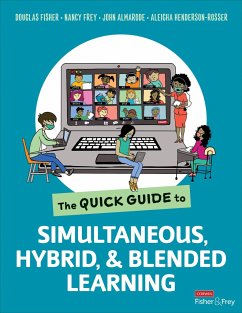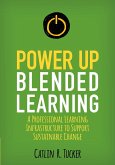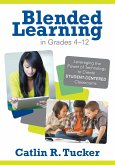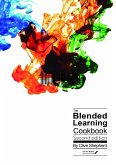What a year! Twelve months and counting since COVID expanded, stretched, and blurred the boundaries of teaching and learning, at least one thing has remained constant: our commitment as educators to move learning forward. It's just the context that keeps changing-why Doug Fisher, Nancy Frey, John Almarode, and Aleigha Henderson-Rosser have created a follow-up to The Distance Learning Playbook, their all-new Quick Guide to Simultaneous, Hybrid, and Blended Learning. First, to be clear: simultaneous learning must not be an additive, meaning we combine two entirely different approaches and double our workload. That's unsustainable! Instead, we must extract, integrate, and implement what works best from both distance learning and face-to-face learning environments. Then and only then-Doug, Nancy, John, and Aleigha insist-can we maximize the learning opportunities for all of our students. To that end, The Quick Guide to Simultaneous, Hybrid, and Blended Learning describes how to: * Have clarity about the most important learning outcomes for our students. This will help us decide what is best done asynchronously and what is best done with our "Roomies" and "Zoomies." * Capitalize on the potential of asynchronous learning and use that valuable time to preview and review. This way we can draw on evidence from these tasks to help us decide where to go next in our teaching and our students' learning. * Utilize synchronous learning for collaborative learning and scaffolding of content, skills, and essential understandings. In doing so, we can collect additional evidence of students' learning so that we provide feedback that moves learning forward. * Establish norms for combining synchronous and face-to-face environments in simultaneous learning. Importantly, we have to set up the environment for our Roomies and Zoomies to learn together. * Develop learning experiences and tasks that maximize learner engagement for all learners in all settings. * Focus on acceleration and learning recovery. In other words, no more deficit thinking! Our students are where they are and there are specific things that we can do to ensure their learning. * Implement the guide's many resources, strategies, and templates. "None of us chose to be in a situation where some learners are physically in our classrooms, while others attend virtually and remotely," write Doug, Nancy, John, and Aleigha. "However, what we hope to convey is that we've got this! While the context is different, the principles behind clarity, planning, high-yield strategies and interventions, student learning, and assessment hold steady." This is where The Quick Guide to Simultaneous, Hybrid, and Blended Learning will prove indispensable on this next leg of our journey.
Bitte wählen Sie Ihr Anliegen aus.
Rechnungen
Retourenschein anfordern
Bestellstatus
Storno








